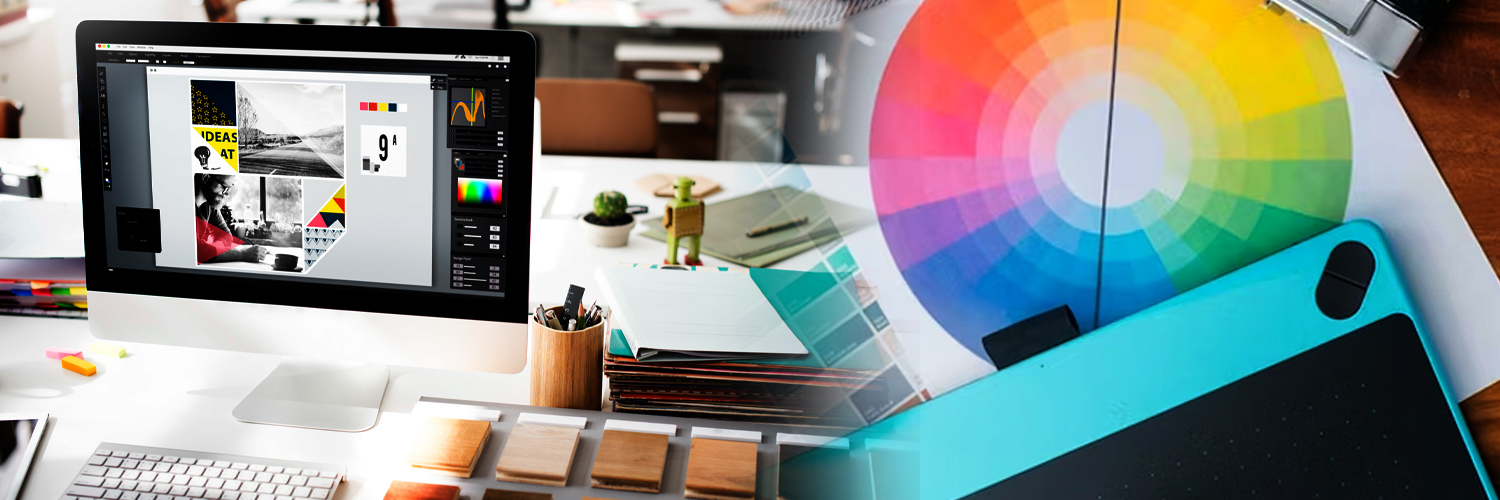Communication Design, often referred to as visual communication design, involves developing visual outputs and messages to convey information and ideas to a target demographic. A variety of design ideas, thought processes, and features are combined in this broad field to communicate with people effectively.
The media and formats covered by Communication Design include print, digital, motion graphics, interactive designs, and more. To produce aesthetically appealing and powerful communication pieces, it uses graphic design, typography, illustration, photography, and other visual art concepts. Moreover, Communication Design uses various sociology, psychology, and communication theories put into a particular output to optimise communication through designs and visual media.
The Communication Design process usually includes the following steps:
- Research & Conceptualization: To collect essential information and requirements, designers engage in research. They analyse various theories and ideas that can convey the information to the target audience in an impactful way.
- Understanding the Message: Communication Designers begin by learning as much as they can about the information that has to be communicated. They examine communication’s objectives, target audience, and intended results.
- Visual Development: After the concept is decided upon, designers begin to create the communication piece’s visual components. The right typography, colours, pictures, and layout must be chosen in order to successfully convey the message and prompt the desired response.
- Production & Implementation: The final design is created by communication designers, who then get it ready for production. To ensure that the design is executed correctly, this may involve creating print-ready files, writing code for interactive or web designs, or working with production teams.
- Evaluation & Feedback: After the design has been created and published, communication designers collect feedback and assess the communication piece’s efficiency. This feedback assists in the improvement of the overall communication plan and future developments.
Communication Design is all about using design principles to create designs that get people’s attention and convey the required ideas or messages effectively. The main goal of Communication Design is to make sure communication is clear, attractive and achieves the required results.
What is the difference between Graphic Design and Communication Design?
The distinction between “graphic design” and “communication design” can fluctuate based on context and interpretation. The phrases are frequently used interchangeably. However, their scope and focus generally vary.
Graphic Design
A subset of the larger discipline of Communication Design is graphic design. It is largely concerned with the design and placement of visual components that convey a particular message or provoke a certain reaction. To create aesthetically appealing and practical designs for a variety of media, including print materials, logos, packaging, commercials, and computer interfaces, graphic designers use their artistic and technical talents.
The following are the main aims of graphic design:
- Visual Appeal: Graphic Designers strive to provide visually appealing, artistically pleasing, and engaging designs. They also focus on keeping the visual flow of the design composition.
- Brand Identity: Through the constant use of colours, fonts, and other brand aspects, graphic design is essential in creating and preserving a company’s visual identity.
- Information Flow: Graphic designers arrange and present information in a clear and visually engaging way to make sure the audience gets the most out of the intended message.
Communication Design
Communication Design has a broader scope than Graphic Design. Communication Design involves taking into account the overarching communication objectives and tactics. It includes making visual materials to clearly convey facts, concepts, or messages to a specific audience. To build comprehensive and cohesive communication solutions, Communication Designers research the target audience, form messaging strategies, and use a variety of design principles. They work across various media formats such as motion graphics, interactive designs, print media, and digital media.
The following are the main aspects of communication design:
Message Strategy: Communication Designers attempt to create a clear and effective strategy to deliver the message. They examine the aim of communication, the audience’s intended reaction, and the best visual elements and design principles to help them reach the communication goals.
Audience Analysis: Communication designers perform research to learn about the traits, requirements, and preferences of the audience. Their designs are customised to effectively communicate with the target audience.
Medium Adaptability: In addition to traditional graphic design, communication design covers a larger number of mediums and formats. It covers motion graphics, interactive designs, various forms of print media and digital media. These platforms are used by communication designers to develop complete and integrated communication solutions.
Thus, the above aspects distinguish Communication Design from Graphic Design. While Graphic Design acts as a specialised discipline within Communication Design, both are equally important aspects to deliver the right message and arrive at the required results.
With communication being a vital part of most businesses, Graphic Design and Communication Design have huge scope across several sectors. Learn extensive and comprehensive Graphic & Communication Design at Acharya with relevant industry exposure, practical training, co-curricular activities, and much more.






























